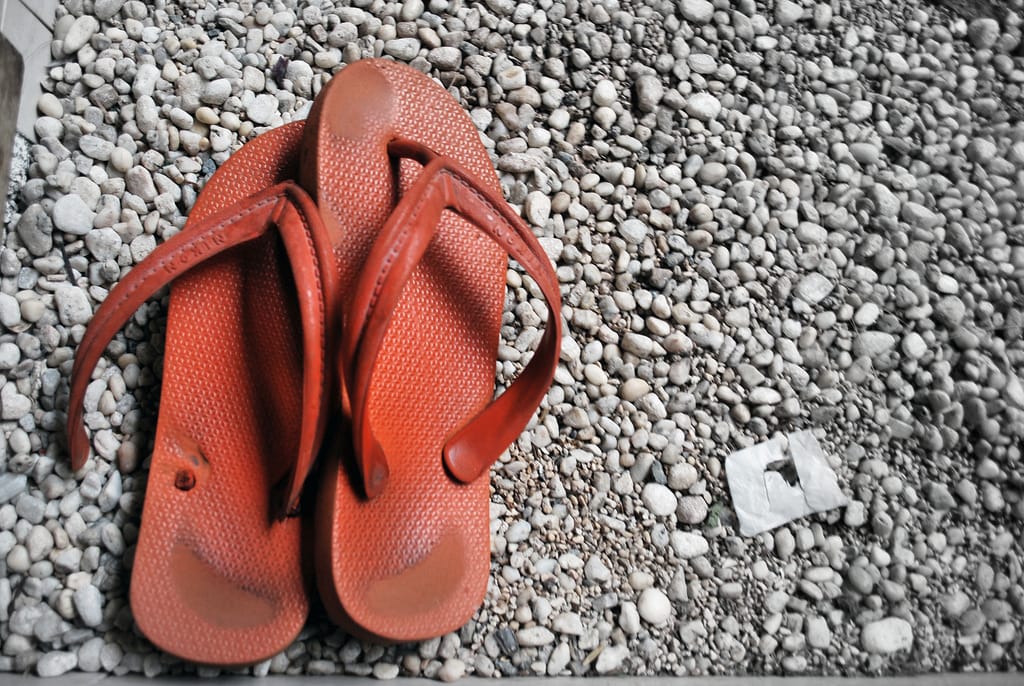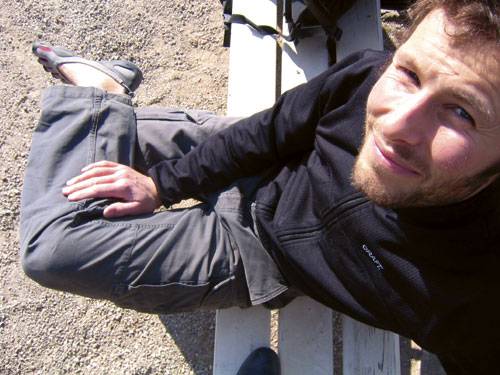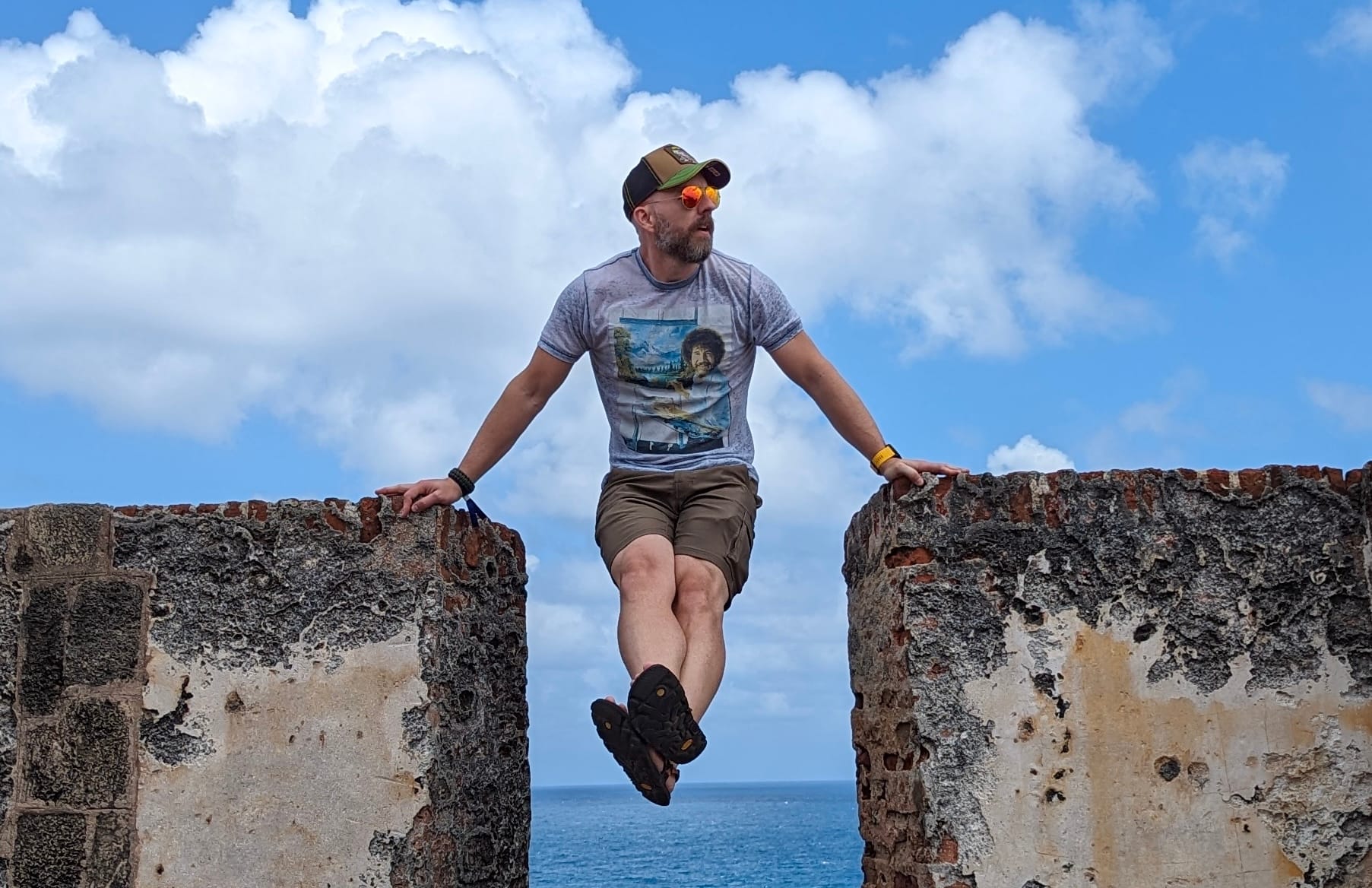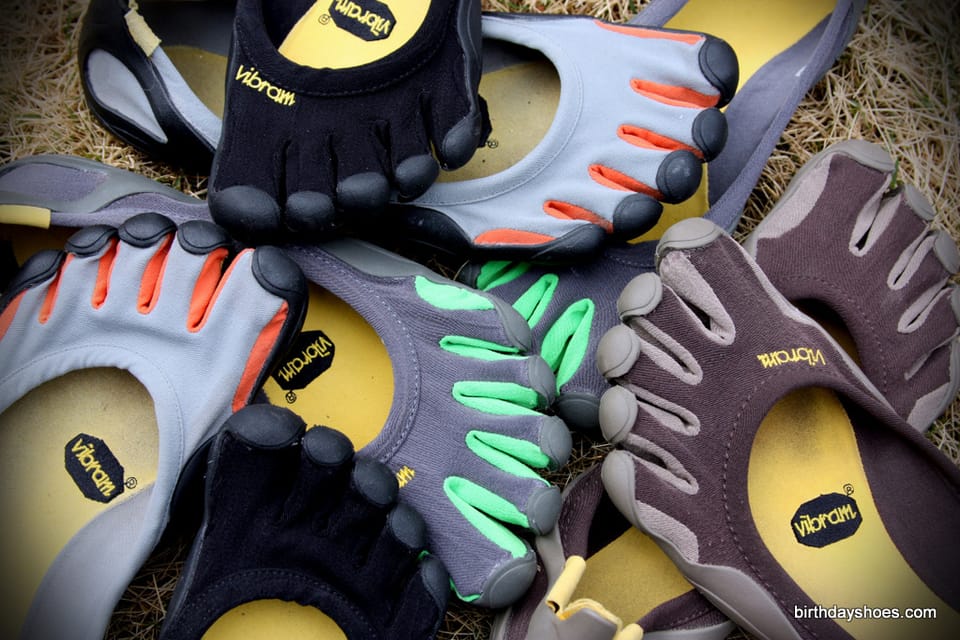Are Flip-Flops Dangerous?
Flip-flops may be hazardous to your health. That's the conclusion I'm led to believe having perused a couple CNN.com articles on one of the most basic forms of footwear worn (and enjoyed) worldwide by virtually everyone at some point or another. A…

Flip-flops may be hazardous to your health.
At least, that's the headline conclusion of a couple CNN.com articles on wearing thong sandals — one of the most basic and ubiquitous forms of footwear worn (and enjoyed) worldwide by virtually everyone regardless of your culture or socio-economic status.
But really, are flip-flops dangerous? Read on!
First, allow me to present the CNN articles on flip-flops. Note the linked bits are the headlines and the blockquotes are selected bits and pieces from the articles:
- Flip-flops present feet with a painful problem by Marina Csomor — July 18, 2012
One common culprit of America's foot pain, especially during the summer, is the flip-flop.
Whether it be on the beach, at the grocery store or even in the office, people love to free their feet. But flat sandals are nothing but bad news, says Bob Thompson, executive director for the Institute for Preventive Foot Health, who doesn't own a single pair.
"There's no heel support and structural support ... on that little slab of rubber." ...
Although feet were designed to walk barefoot on Earth's natural surfaces (grass, sand or gravel), they were not prepared to endure the concrete, asphalt and steel that covers so many landscapes today, Thompson said. These unmovable surfaces are harsh on bare feet, and the thin rubber sole of many flip-flops does little to adequately absorb the shock they produce.
Whether you are standing still or in motion, your feet are your first point of contact with the ground. The way your feet are positioned provides the foundation for the body's skeletal alignment. A flat shoe provides little arch or lateral support and even slight shifts in stance over time could lead to misalignment, causing pain in the knees, hips and back.
"Everything in your body starts with how you strike your heel to the ground," Thompson said.
- Flip-flops aren't always easy on the feet by Val Willingham — August 6, 2010
"I'm not totally against flip-flops," she says, "but they can be dangerous."
This is the kind of authoritative news being fed to John Q. Public on footwear.
While I think there are much more functional sandals out there than flip-flops, characterizing flip-flops as hazardous to your health seems just a tad sensational.
My inner skeptic goes haywire when I read articles containing fearful quotes ("dangerous!") by authorities. And in these two instances, the usual suspects include podiatrists (A bad word in the barefoot community) and the Institute for Preventative Foot Health (Near as I can tell from reading about the "IPFH", having healthy feet simply requires padded socks — perhaps those made by IPFH founder and sponsor Thorlo). I also don't buy the old stand-by argument that man-made surfaces are more dangerous or harmful than natural surfaces line.
I'll withhold picking apart either of these articles* other than to say that they're each jumbled messes of confusing and conflicting information — but one thing is clear: they've got headlines that are pretty damning of flip-flops. So what's the straight dirt on flip-flops: are they dangerous? What are the pros and cons? From where I sit, it's a mixed bag:
Flip-Flops Cons:
- Many flip-flops can be fairly stiff soled. This can reduce the range of motion of the foot. It also will put pressure on the top of your foot at the instep where the flip-flop straps put pressure against your foot when you walk.
- Without anything in the back to keep the rear sole of the flip-flop from staying close to your foot, it tends to hang in the back and drag on the ground.
- To reduce the chance of your flops falling off and to minimize the aforementioned dangling sole (at the heel), people tend to grasp the front of the flip-flop. This isn't a natural motion — typically your toes point to the sky (dorsiflex) when you walk. This is probably one of the biggest problems with flip-flops because prolonged wear will reprogram your foot to do this grasping thing with every step. Since this would be a bad way to walk barefoot (likely resulting in stubbed toes), well, it's a consideration in opting to wear flip-flops.
- You can't really run in flip-flops very well and you certainly can't run in them naturally.
Note that I don't mention as negatives things like "lack of arch support" or the fact that they are flat and typically lacking in a lot of cushion (though there are certainly plenty of foam-soled flops with a fairly plush ride).
Flip-Flops Pros:
- They're dirt cheap and pretty minimalist. I can't call flip-flops "minimalist" or "barefoot" in the "minimalist/barefoot shoes" sense because they alter natural bio-mechanics in non-significant ways (The toe grasping thing really seems like an issue to me).
- Without much sole, you get fairly good contact with the ground. The lack of support and cushioning encourage a lighter step. In the second article above, this reference jumped out at me: "[Flip-flops] can help with arthritic joints. A recent study conducted at the Rush University Medical Center in Chicago, Illinois, found people who had arthritic knees had less stress on their joints wearing flip-flops than other types of shoes." What the what?
- They're super airy! Feet like to breath like the rest of your skin.
- They aren't supportive — mostly. There are some fairly overbuilt, heavy, and arch-support/toe-springy flip-flops or thongs out there, so this certainly doesn't go for all flip-flops.
- They let your toes splay. No toe box means unconstrained toes.
- They're crazy easy to put on and take off. Who doesn't love this aspect of flip-flops?
I have a number of pairs of flip flops but I never wear them, anymore. For one, I don't like that they tend to reprogram my toes (neuroplastics!) to flex and grasp downward (rather than dorsiflex) when I walk. These days I tend to avoid footwear that gets in the way of natural bio-mechanics. And to me, that's the end-all be-all reason not to wear flip-flop.
So are flip-flops dangerous?
Are flip-flops a risk to your health because they may alter you gait and the specifics of how you walk? I don't think so (What do you think?). I think the more important question is: are flip-flops at all healthy for your feet?
I tend to think I they are. I think for the majority of human beings, flip-flops are probably a good choice relative to supportive, toe-constricting, heel-elevating mainstream/traditional footwear. That's because they get you closer to the ground, let your feet breath, let your toes splay, and don't provide a ton of support. My hunch is that all of this will tend to make your feet stronger. From this perspective, flip-flops might be compared to Nike Frees and Reebok Realflexes — better options relative to the more built-up sneakers of recent history.
Of course, if you're wondering about footwear that provides many (if not all) the benefits of a flip-flop but without the gait-altering bio-mechanical hangover, well, there are some alternatives out there. I'm thinking specifically about Classic FiveFingers, huaraches and other minimalist sandals that allow you to run and play, or even a "shoe" like the Vivo Barefoot Ultra Pure. All are vastly more functional than a pair of flip-flops, are relatively easy to put on, are lightweight, and let your feet breath. Hard to beat that.
So that's my take. Flip-flops aren't dangerous. They're not ideal, but for many, they're a good thing.
And don't believe everything you read in the press!
Extra credit: the NPD study sponsored by the IPFH that indicates "78% of adults have experienced one or more foot problems in their lives" is a worthwhile 10 minute skimming — most notably that 78% figure is down 10% from the last time they ran the study in 2009 (so there's been a significant decline in reported foot problems), something CNN failed to note. It also has figures about various foot ailments split between men and women with women reporting the bulk of foot issues (is this a surprise given the types of footwear available to women so often include pointy toe boxes and high heels?)
- I also realize that any good news source is going to spin a yarn and take quotes out of context, so there's something a little backwards about cherry-picking statements and quotes from So-and-so of the Such-and-such Institute and then blasting them on the blogosphere. Not that I've never done that before, I'm just sayin'!




